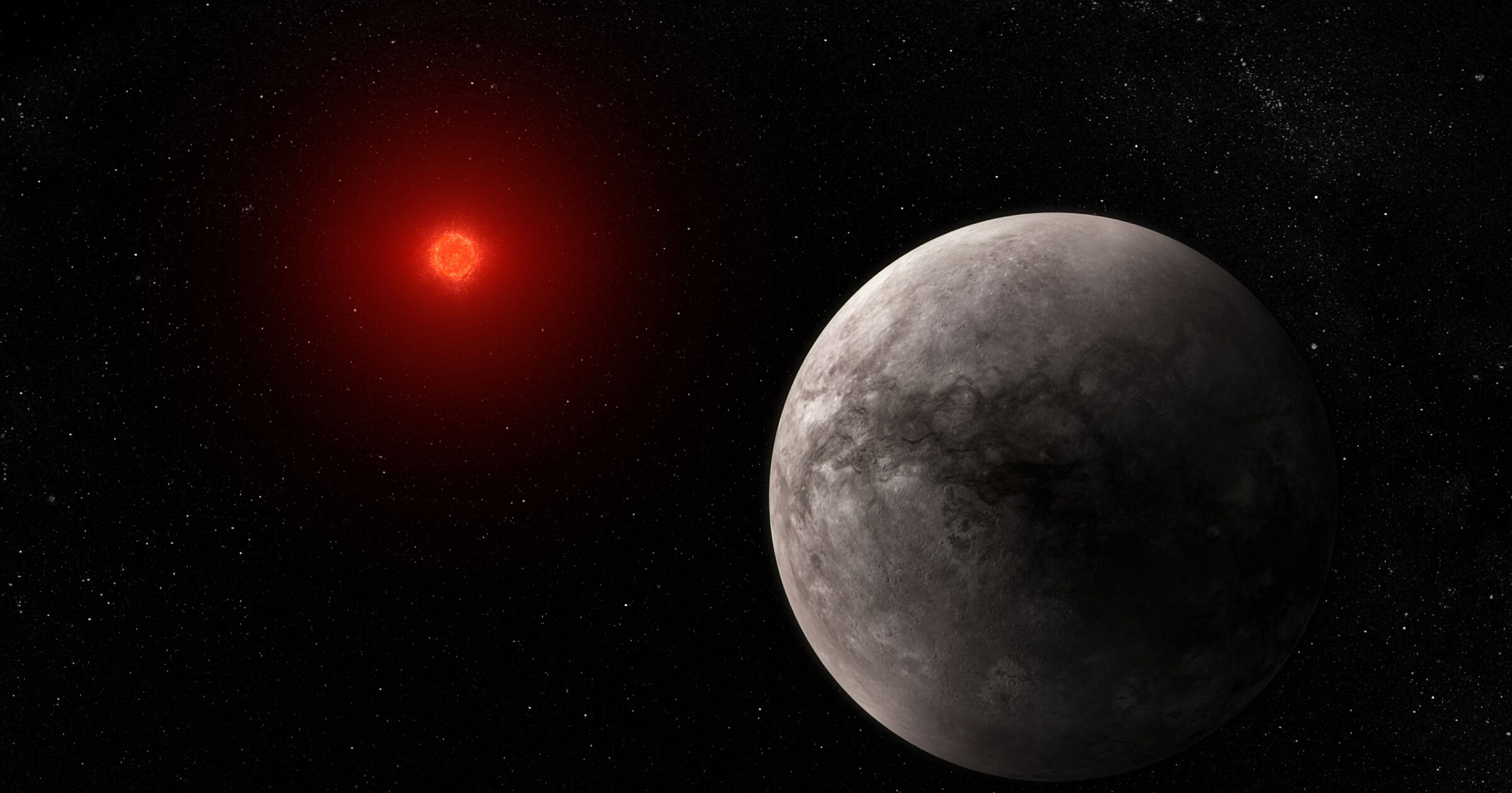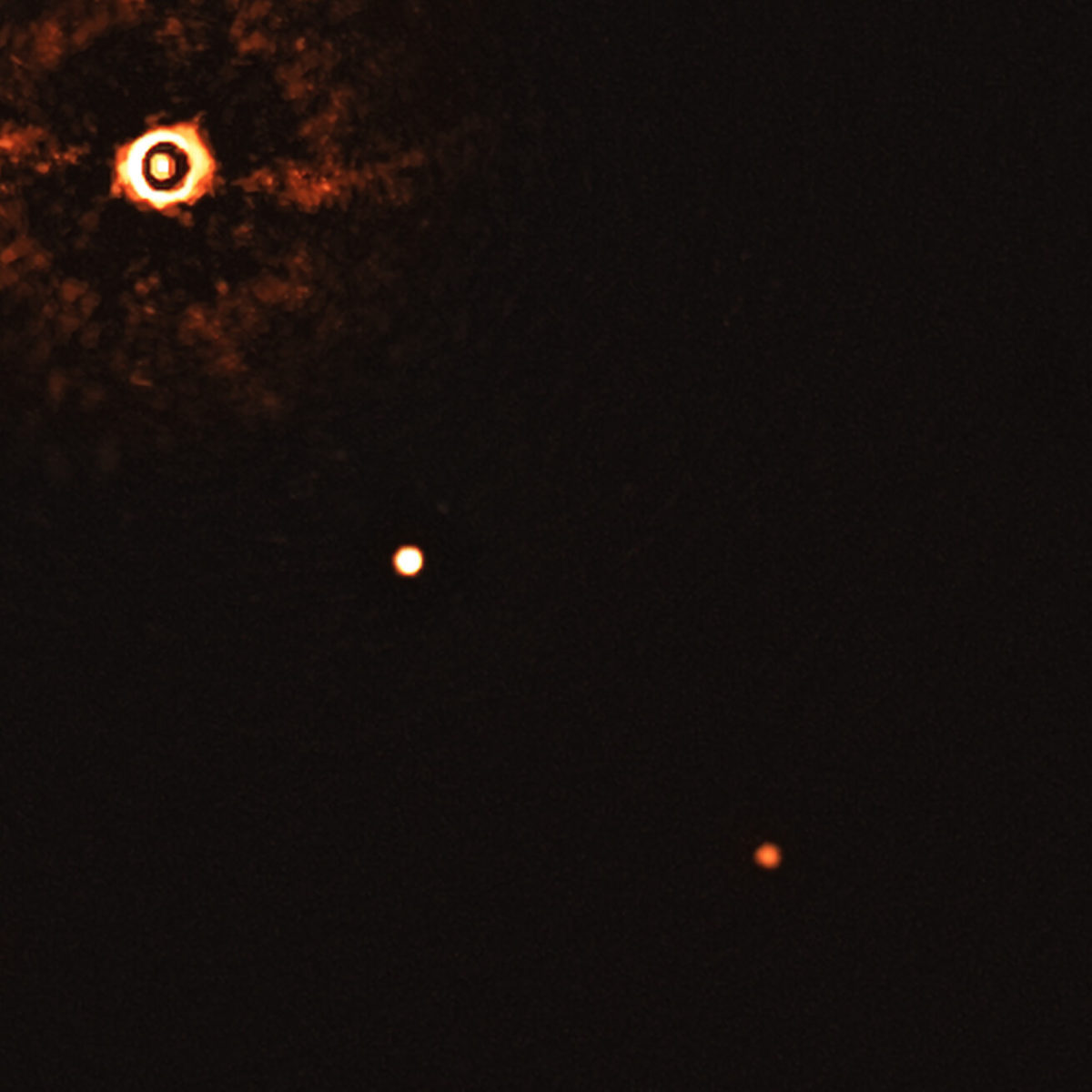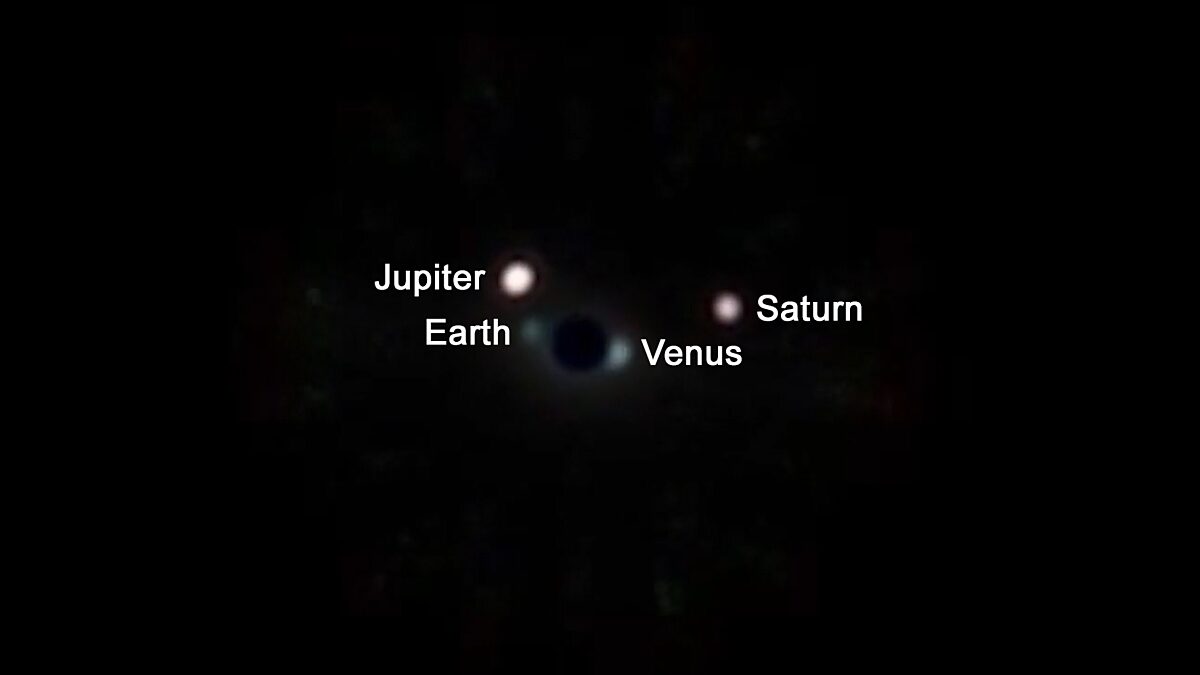The search for Earthlike worlds
In July 2022, just six days after NASA declared that the James Webb Space Telescope was ready for full science operations, the observatory aimed its gold-plated mirrors at a star named TRAPPIST-1.
Located 40 light-years away from Earth, TRAPPIST-1 has seven known planets. At least three are in the star’s habitable zone, the not-too-hot, not-too-cold region where liquid water can exist on a body’s surface. This makes them prime targets in the search for Earthlike worlds.
TRAPPIST-1 is a red dwarf, a type of star that is small, dim, and cool (by stellar standards). Roughly three-fourths of the stars in the Milky Way are red dwarfs. If TRAPPIST-1 swapped places with our Sun, its habitable zone would fit entirely within the orbit of Mercury. Although planets there would be at the right temperature for liquid water, they could also be bathed in radiation harmful to life as we know it.
“The missing piece is whether the habitable zone of a red dwarf is truly habitable because it’s so close to the star,” said Jessie Christiansen, a research scientist at the NASA Exoplanet Science Institute.
That’s where JWST comes in. The space telescope can scan the
atmospheres of certain exoplanets as they transit in front of their
stars, looking for chemical compounds linked to the presence of life.
JWST
could not initially determine whether TRAPPIST-1b, the planet closest
to the star, has an atmosphere. Scientists saw intense magnetic activity
and solar flares during their observations, which contaminated their
data and raised questions on whether life could survive on any worlds
near the star.
TRAPPIST-1c sits near the inner edge of the
habitable zone and has been theorized to be Venuslike. But JWST
observations found little evidence for a thick carbon dioxide
atmosphere, leading scientists to hypothesize that the planet formed
with very little water. Results are still pending for TRAPPIST-1d, e,
and f, the three planets inside the habitable zone, said Christiansen.
“So
as of yet, JWST has not unlocked this mystery of whether rocky
exoplanets around red dwarf stars can have atmospheres,” she said. “I
expect this year we will come one step closer to that answer.”
JWST is just one instrument in a broad toolkit scientists use to search for and characterize Earthlike exoplanets. New, powerful ground-based observatories are set to come online soon while the scientific community eyes the development of the Habitable Worlds Observatory, a “super Hubble” designed to directly image dozens of Earthlike worlds in their stars’ habitable zones.

High-precision wobbles
Before we can study Earthlike exoplanets, we have to find them.
NASA’s Transiting Exoplanet Survey Satellite, TESS, is the current workhorse of exoplanet discovery. The space telescope stares at the sky, looking for dips in starlight that would indicate an exoplanet passed in front of or behind its host star. Since its launch in 2018, TESS has found 7,000 exoplanet candidates and confirmed more than 400. According to NASA’s exoplanet catalog, nine are terrestrial, meaning they are rocky with iron-rich cores similar to Mercury, Venus, Earth, and Mars.
We also find exoplanets using ground-based instruments. One method is the radial velocity technique. As a planet orbits its star, its gravity tugs on the star, making it wobble. By watching a star wobble over long periods, scientists can infer the presence of planets.
The smaller the planet, the less the star wobbles. Earth exerts a pull of just 10 centimeters (4 inches) per second on the Sun. At these fine scales, it’s very hard to determine what’s an actual wobble amid instrument uncertainties and noise from the uneven surfaces of stars.
For years, Debra Fischer has been pushing the limits of what the radial velocity technique can do. The Yale University astronomer led the team that built a high-precision spectrograph called EXPRES that scans the sky using the Lowell Discovery Telescope in Happy Jack, Arizona. Similar projects include the NEID spectrograph on the WYN telescope at Kitt Peak in Arizona, the Keck Planet Finder in Hawaii, and ESPRESSO on the Very Large Telescope in Chile’s Atacama Desert.
“Every single moment in this field, we’re always pushing against the floor of stellar noise or instrumental precision,” she said.
Planetary Society members and donors have supported Fischer’s work over the years, most recently to repair a laser frequency comb used to calibrate EXPRES. During the day, scientists observe the Sun with EXPRES, collecting data that are used to understand how our own star wobbles and generates noise.
Fischer is now starting to use what she and her colleagues have learned over the years and is applying it to their data. She can now detect star wobbles as small as 30 centimeters (about 12 inches) per second — not quite an Earth-sized planet, but close.
“The quality of our data is amazing,” said Fischer. “I feel like there’s a whole new standard in radial velocity measurements.”

A ground-based renaissance
In the next several years, two new, giant ground-based telescopes are expected to come online. Hopes are high that these facilities may be able to equal or exceed JWST’s ability to detect the atmospheric compositions of Earthlike exoplanets.
First light for the European Southern Observatory’s Extremely Large Telescope is scheduled for 2028. The telescope’s main mirror consists of nearly 800 segments and has a diameter of 39 meters (128 feet). Located in Chile’s Atacama Desert, it will be the largest optical telescope in the world. The ELT will be able to directly image exoplanets and characterize the atmospheres of Earthlike planets in their stars’ habitable zones.
In a study published in The Astronomical Journal, researchers simulated the ability of the ELT to detect oxygen, carbon dioxide, methane, and water on 10 known rocky exoplanets. They found that the ELT and its instruments could indeed detect these potential signs of life.
The Giant Magellan Telescope, also located in the Atacama Desert, is scheduled to begin operations in the early 2030s. The GMT has a seven- segment mirror that measures 25 meters (82 feet) across. The telescope’s Large Earth Finder instrument will measure the mass of Earthlike planets and search for biosignatures in their atmosphere.
The Thirty Meter Telescope would have, as its name implies, a mirror 30 meters (98 feet) wide. The TMT would be able to directly detect and characterize exoplanets. Construction of the telescope on the summit of Mauna Kea in Hawaii was suspended following objections from native Hawaiians, who consider the land sacred. It is currently unclear whether a compromise can be made or if the telescope will move to an alternate location.

Observing habitable worlds
In addition to the new ground-based observatories coming online, a new fleet of space-based exoplanet explorers is scheduled to launch over the next few years.
First up is Plato, which stands for PLAnetary Transits and Oscillations of stars. Scheduled to launch in 2026, the European Space Agency mission will measure the size of rocky exoplanets in the habitable zone of Sunlike stars.
Next is NASA’s Roman Space Telescope, scheduled to launch in 2027. The RST will search for exoplanets using the microlensing technique, which relies on the gravity fields of stars and galaxies to bend and magnify the light of objects behind them. The RST will also test a coronagraph to block the light of stars and directly image exoplanets.
In 2029, ESA plans to launch Ariel, the Atmospheric Remote-sensing Infrared Exoplanet Large-survey mission. Ariel will study the atmospheres of about a thousand exoplanets, including gas giants and rocky worlds.
China also hopes to get in on the space-based exoplanet game around the end of the decade with a set of formation-flying telescopes called Miyin. The mission would directly image and characterize exoplanets in our galactic neighborhood.
While these new missions will place us at the doorway of finding a world like our own, a large space telescope in early development aims to push us through the threshold once and for all.
NASA’s Habitable Worlds Observatory, or HWO, will be NASA’s next flagship telescope mission. HWO would be designed to directly image at least 25 potentially habitable worlds around other stars and search their atmosphere for biosignatures, like oxygen and methane.
Janice Lee is the project scientist for strategic initiatives at the Space Telescope Science Institute in Baltimore, Maryland. Her job is to work with scientists to advance the mission concept as rapidly as possible.
She encourages people to think big: “Think of this telescope as a ‘super Hubble.’ Let’s say the size of Hubble’s mirror grew three times or even five times,” she said. “Imagine what you could do then.”
HWO’s main mirror would be about the size of JWST’s, but instead of having instruments tuned to infrared light, HWO would be configured for visible and ultraviolet light like Hubble. Certain biosignatures are more pronounced in visible and ultraviolet wavelengths.

An exciting element of HWO’s design is that it would be serviceable like Hubble, so astronauts could repair and upgrade the telescope. Visiting HWO would be a considerable feat since the observatory would orbit the second Lagrange point like JWST, located 1.5 million kilometers (1 million miles) from Earth.
The HWO project webpage features a time-lapse video showing what it would look like if the telescope imaged our own Solar System for 10 years from a distance of 40 light-years. Venus, Earth, Mars, Jupiter, and Saturn are all visible, slowly orbiting our Sun. A view like this of a star system with habitable exoplanets is a tantalizing prospect, but it’s one that will require patience, as HWO would launch no earlier than the early 2040s.
An early 2040s launch date would roughly coincide with the 50th anniversary of the first exoplanet discovery in 1992. In the span of a single human lifetime, exoplanet science has blossomed from its inception to the potential discovery of an Earthlike world. With plenty of exciting discoveries ahead, the best is yet to come.
The Time is Now.
As a Planetary Defender, you’re part of our mission to decrease the risk of Earth being hit by an asteroid or comet.
Donate TodayThe Planetary Report • June Solstice
Help advance space science and exploration! Become a member of The Planetary Society and you'll receive the full PDF and print versions of The Planetary Report.


 Explore Worlds
Explore Worlds Find Life
Find Life Defend Earth
Defend Earth


